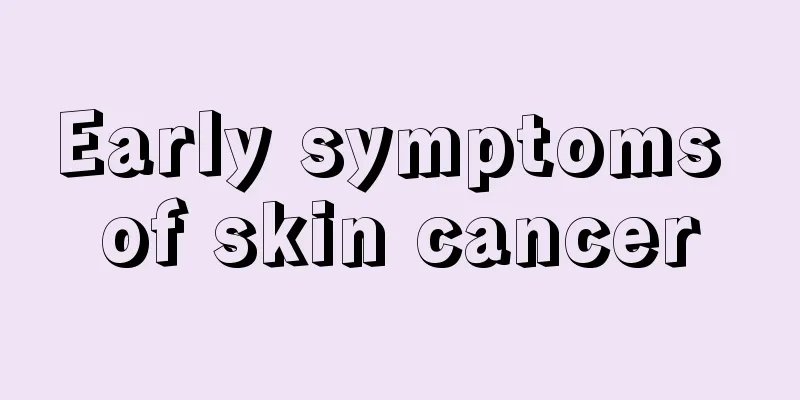What is the cause of cerebral arteriosclerosis

|
Speaking of cerebral arteriosclerosis, it is indeed a disease that has appeared frequently in recent times, and there are many elderly patients among them. As you get older, the threat to your life becomes greater. Long-term lack of treatment can easily lead to some unexpected complications, so many children want to know more about the disease so that they can help the elderly prevent it before it occurs. So, what is the cause of cerebral arteriosclerosis? 1. Hypertension is closely related to this disease. If blood pressure continues to rise, the incidence of atherosclerosis will increase significantly. Hypertension causes vascular dilation, stimulates smooth muscle cell proliferation, damages the intima and endothelial cell layers, and allows blood lipids to accumulate on the blood vessel walls. Hyperlipidemia is also one of the risk factors of the disease. If total cholesterol, triglycerides, low-density lipoprotein (LDL) or very low-density lipoprotein (VLDL) increase, and high-density lipoprotein, especially its subcomponent II (HDLⅡ) decrease, the disease is prone to occur. Research on apolipoproteins in recent years has shown that a decrease in apolipoprotein A and an increase in apolipoprotein B are also related to this disease. 2. Bad diet and bad habits People who often eat high-calorie diets, more animal fat, cholesterol, sugar and salt are prone to this disease. Western diet is an important factor in causing disease. Compared with non-smokers, smokers have a significantly higher incidence of arteriosclerosis, which is directly proportional to the number of cigarettes smoked per day. In addition, reduced intake of certain trace elements, such as chromium, manganese, zinc, vanadium, and selenium, and increased intake of lead, cadmium, and cobalt, can also make people susceptible to this disease. Symptoms of cerebral arteriosclerosis: 1. Dizziness: Dizziness is the most common symptom of hypertension. Some are transient, often occurring when squatting or standing up suddenly, and some are persistent. Dizziness is the main pain of patients. They have a persistent dull and uncomfortable feeling in the head, which seriously hinders thinking, affects work, and causes loss of interest in surrounding things. When hypertensive crisis or vertebral-basilar artery insufficiency occurs, symptoms similar to inner ear vertigo may appear. 2. Headache: Headache is also a common symptom of hypertension, which is mostly persistent dull pain or throbbing pain, or even explosive pain. It often occurs in the morning when waking up, and gradually subsides after getting up and moving around and after meals. The pain is mostly in the temples on both sides of the forehead and the back of the head. 3. Irritability, palpitations, and insomnia: Patients with hypertension tend to be impatient, sensitive, and easily excited. Palpitations and insomnia are more common. Insomnia is often characterized by difficulty falling asleep or waking up early, unrecoverable sleep, nightmares, and easy awakening. This is related to cerebral cortex dysfunction and autonomic nervous system dysfunction. 4. Inattention and memory loss: It is not obvious in the early stage, but gradually worsens as the disease progresses. Because it is quite distressing, it is often one of the reasons that prompts patients to seek medical treatment. It is manifested by easy distraction and loss of recent memory. It is often difficult to remember recent events, but things in the past, such as childhood, are still fresh in the memory. 5. Limb numbness: common symptoms include numbness in fingers and toes, a tingling sensation on the skin, or tension and soreness in the neck and back muscles. Some patients often feel stiffness in their fingers. Generally, the condition will improve after proper treatment. However, if the limb numbness is stubborn, lasts a long time, and is fixed to a certain limb, and is accompanied by limb weakness, cramps, and throbbing pain, you should go to the hospital in time to prevent a stroke. 6. Bleeding: less common. Since hypertension can cause arteriosclerosis, which reduces the elasticity of blood vessels and increases their fragility, they are prone to rupture and bleeding. Among them, nosebleed is the most common, followed by conjunctival hemorrhage, fundus hemorrhage, cerebral hemorrhage, etc. According to statistics, among patients with severe nosebleeds, about 80% suffer from hypertension. After reading the above introduction, you will find that the occurrence of cerebral arteriosclerosis is actually related to some common daily diseases. Therefore, everyone must take good care of their physical health in daily life. Even when they are young, they should not ignore the importance of physical health. |
<<: What are the ways to grow taller
>>: What are the examination items for cerebral arteriosclerosis
Recommend
Is it good to drink Tieguanyin in summer?
For some older people, they like drinking tea ver...
What to do if you have hamstring pain due to liver cancer
What should I do if I have hamstring pain due to ...
What are the symptoms of ataxia?
Ataxia is a coordination disorder that causes unc...
Normal value of alkaline phosphatase
The human body needs many kinds of nutrients, and...
What are some tips to solve the itchy scalp during confinement?
At the beginning of the confinement period, new m...
What disease can a high fever cause
High fever is a very common symptom and also a re...
Is there any specific medicine for pituitary tumor
Pituitary tumors seriously endanger our health. N...
Vaginal bleeding after the IV drip
Vaginal bleeding after an IV drip may be related ...
Experts explain the genetic factors in the cause of kidney cancer
Kidney cancer is a very common disease in life, a...
What is the fastest way to remove paint smell?
Paint is the most commonly used decoration produc...
What are the symptoms of high blood sugar on the face
Nowadays, it is becoming more and more common for...
The best medicine to lower blood sugar after meal
People's physical health is very important, b...
The black whiskers in the wart
Plantar warts are caused by a viral infection and...
Amblyopia treatment, you should do this
In addition to some physical diseases, eye diseas...
Can advanced esophageal cancer be cured?
Esophageal cancer has caused many families to los...









